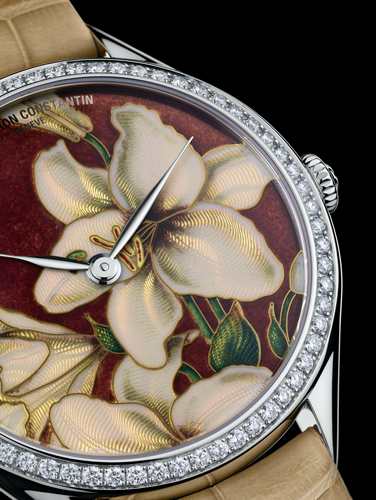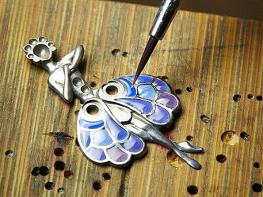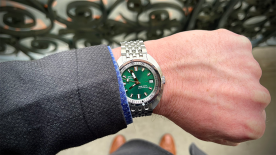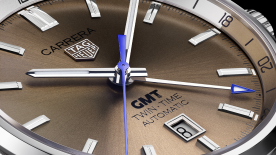Last week, we took a look at the current state of enamel in the luxury watch industry, particularly focusing in on cloisonné, which is a popular technique used to create concrete figures. This week we take a look at a few other techniques.
Van Cleef & Arpels has been a strong proponent of enameled art, particularly when it comes to the firm’s Poetic Complications line. The concept became popular not only for its unusual, yet easily understood mechanics, but also for the fact that its enamel dials allow for aesthetics that make each model unique.

“In effect, it is the dial that is the determining factor at Van Cleef & Arpels,” said Dominique Baron, the gifted master enameller that Van Cleef & Arpels collaborated with on the Poetic Complications line up to her untimely death last year. “The creations by Van Cleef & Arpels effectively give another dimension to time because its representation across the Poetic Complication watches is above all an aesthetic one approaching more of an artistic oeuvre telling a story that one wears on the wrist rather than a watch.”
Van Cleef & Arpels often uses the champlevé technique to create its artistic dials. This approach calls for a comparatively thick metal base that has been engraved to leave cavities in the desired shape. The enamel is put into these prepared grooves, which form shapes and thus allow for concrete forms. Then it is fired and sanded once it leaves the kiln; after cooling excess material is removed to give it an extra shine. Any metal framework, which might be engraved or guilloché, is added after this step. This final step is a delicate operation: any mistake made here would mean that hours and hours of painstaking work would be for naught. The combination of crafts needed to complete one dial as well as the various patterns chosen to decorate them ensure that each of these timepieces is unique.
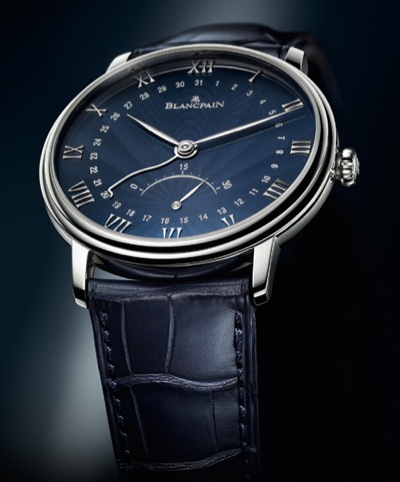
Pailloné
Early in Jaquet Droz’s re-emergence phase, the Swatch Group-owned brand resuscitated a technique that Pierre Jaquet Droz had used on some of his original pocket watches. The dial of the Cerclée Paillonée, for example, was a proving ground for the pailloné technique. This word is French for “spangling” and describes the technique of decorating a dial with colored metal spangles or specks (called paillons) and then firing them together with a layer of transparent enamel. The result is a beautiful enamel with a glittery quality. Needless to say, this is a very touchy technique that can produce many dials lost in the fires of the kiln. It has remained less popular in watchmaking – probably due to both its complexity and relative opulence – though Cartier used it in 2011 on some of its “métier d’arts” pieces.
Jaquet Droz (and a variety of others) employ the grand feu style of enamel for many more sober designs, which works particularly well with large, open dials. This style of enamel, which is generally not as ornamental when compared to other styles, relies heavily on the enameller’s experience in judging the perfect amount of heat and time in the kiln, which is set up to 900°C depending on the colors involved. Firings may be undertaken up to ten times per dial, with the risk of damage exponentially high every time. Once a high-fire dial has been successfully completed, though, it will not be altered by the passage of time. It will retain its elegant, aesthetic qualities for centuries.
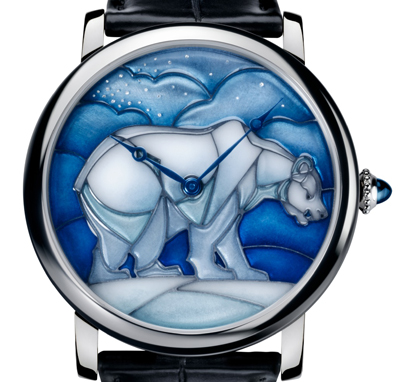
Other techniques
Flinqué enamel, for example, sees a guilloché or engraved dial subjected to several layers of translucent, colored enamel. Fabergé was famous for this technique as displayed in particular on the world-famous Fabergé eggs. One of the most important elements of the flinqué technique is the polishing that takes place post-firing. This will determine the glossy, rich depth of the dial.
The plique-à-jour technique, on the other hand, is revered for its transparent qualities. French for “letting in daylight,” the enamel is applied to remain within its set boundaries (like cloisonné but without the gold threads to separate) and form a concrete figure. Technically very challenging, this technique has no support such as the back of a dial as it must remain transparent. Resembling a stained-glass window when complete, it is a time-consuming technique that can take up to four months before the dial in question is ready.
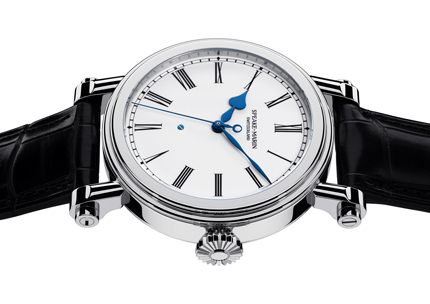
In-house
Handmade pieces in exclusive and often patented designs cannot, of course, be produced in great quantities. The high-fire (grand feu) enamel miniature paintings alone can take up to two months of very delicate and risk-taking craft, and only a small number of pieces leave an artist’s workshops each year.
For this reason, some elite watch manufacturers have decided to bring this rare skill in house. Vacheron Constantin, for example, can now boast enameling at its Plan-les-Ouates facility inaugurated in 2004. Sylvia Callovera, who learned the unique art from Anita Porchet along with Dominique Baron, is in charge of beautifying the venerable Geneva manufacture’s Métier d’Art pieces.
DeLaneau, Cartier and julien Coudray also boast internal enameling facilities.
